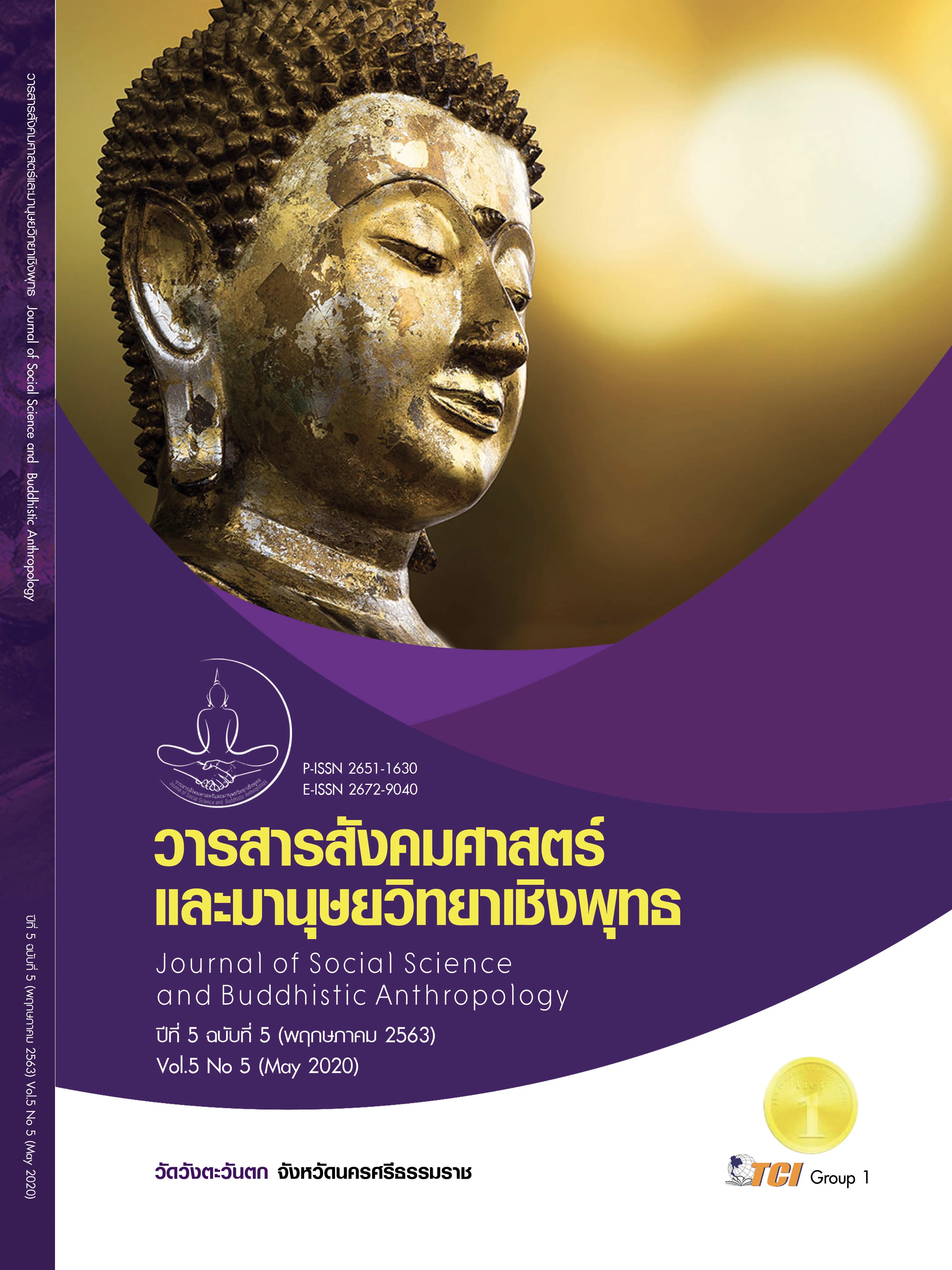STRATEGIES FOR INTERNAL QUALITY ASSURANCE IN SCHOOLS BY USING LEARNING ORGANIZATION CONCEPT UNDER PHRAPARIYATTIDHAMMA SCHOOLS GENERAL
Keywords:
Strategies, Internal Quality Assurance of the School, Learning Organization, Phrapariyattidhamma SchoolsAbstract
The purposes of this research were: to create strategies of internal quality assurance in schools by using learning organization concept under Phrapariyattidhamma Schools, General Education, in the northeast region is mixed methods research. The sample group used in this research was Phrapariyatithamma Schools, General Education, in the Northeast region including 22 administrators and 332 teachers with the total number of 354 people. The sample size was determined by R.V. Krejcie & D.W. Morgan using stratified random sampling. The research instruments were a 5-level rating scale questionnaire with Index of Item–Objective Congruence (IOC) between 0.80-1.00 and reliability at 0.90. The statistics used for data analysis comprised percentage, mean, standard deviation and reliability. The research results were found that: Strategies for internal quality assurance of schools by using the concept of learning organization under Phrapariyattidhamma Schools, General Education, in the northeast region consisted of 7 strategies. Objective: Empower cooperation in the development of school standards to meet the educational standards set under the supervision and support of the agency .Strategy 1 Setting the education standard of the school Strategy 2 Planning of educational quality development according to quality standards Strategy 3: Implementation of the plan to the eye quality work, educational standards Strategy 4 Raising the assessment Results and monitoring of educational management Strategy 5 Monitoring the quality according to educational standards Strategy 6 Creating a self-evaluation report (SAR) Strategy 7 Enhancing capacity, driving power, continuous improvement of educational quality.
References
กระทรวงศึกษาธิการ. (2561). กฎกระทรวง การประกันคุณภาพ พ.ศ.2561. ราชกิจจานุเบกษา เล่ม135 ตอน11 ก หน้า 3 (23 กุมภาพันธ์ 2561).
คณะกรรมการการศึกษาขั้นพื้นฐาน. (2554). แนวทางการประเมินคุณภาพตามมาตรฐาน การศึกษาขั้นพื้นฐานเพื่อการประกันคุณภาพภายในของสถานศึกษา. กรุงเทพมหานคร: โรงพิมพ์สำนักงานพระพุทธศาสนาแห่งชาติ.
ชนกนาถ วงคำจันทร์. (2554). ยุทธศาสตร์การเสริมสร้างระบบประกันคุณภาพภายในสถานศึกษาขั้นพื้นฐานสังกัดสำนักงานเขตพื้นที่การศึกษาประถมศึกษาขอนแก่น เขต 4. ใน วิทยานิพนธ์ศึกษาศาสตรมหาบัณฑิต สาขาวิชาการบริหารการศึกษา. มหาวิทยาลัยภาคตะวันออกเฉียงเหนือ.
วิเชียร รู้ยืนยงและคณะ. (2559). บทบาทของผู้บริหารในการจัดองค์กรแห่งการเรียนรู้ ของสถาบันการอาชีวศึกษาในภาคตะวันออกเฉียงเหนือ. วารสารศึกษาศาสตร์ มหาวิทยาลัยขอนแก่น, 39(1), 70-79.
ศิริชัย กาญจนวาสี. (2550). การวิเคราะห์พหุระดับ : Muti-level Analysis. (พิมพ์ครั้งที่ 4). กรุงเทพมหานคร: จุฬาลงกรณ์มหาวิทยาลัย.
สมเกียรติ บุญสูงเนิน. (2559). กลยุทธ์การบริหารงานประกันคุณภาพภายในสถานศึกษาที่มีประสิทธิภาพ สังกัดสำนักงานเขตพื้นที่การศึกษาประถมศึกษาชัยภูมิ เขต 1. ใน ดุษฎีนิพนธ์ปรัชญาดุษฎีบัณฑิต สาขาวิชาการบริหารการศึกษา. มหาวิทยาลัยภาคตะวันออกเฉียงเหนือ.
สำนักงานเลขาธิการสภาการศึกษา กระทรวงศึกษาธิการ. (2560). แผนการศึกษาแห่งชาติ 2560-2579. กรุงเทพมหานคร: บริษัท พริกหวานกราฟฟิค จำกัด.
สุวิมล ว่องวาณิช. (2550). การวิจัยประเมินความต้องการจำเป็น. กรุงเทพมหานคร: สำนักพิมพ์แห่งจุฬาลงกรณ์มหาวิทยาลัย.
Cronbach, L. J. (1990). Essentials of psychological testing (5th ed.). New York: Harper Collins Publishers.
Krejcie, Robert V. & Morgan, Daryle W. (1970). Determining sample size for research activities. Educational and Psychological Measurement, 30(3), .607-610.
Marquardt, M. J., & Reynolds, A. (1994). The Global Learning Organization. New York: Irwin Professional Pub.
Pedler, M.et al.. (1998). The Learning Company: A Strategy for Sustainable Development. London: Mc Graw-Hill.
Senge,P.M. (1990). The fifth discipline :The art and practice of the learning organization. London: Century Press.








